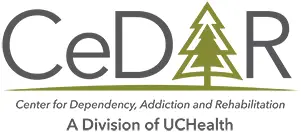SOCIOLOGY AND PUBLIC HEALTH
In March of 2019, U.S. Chief Magistrate Judge Joseph Spero ruled against UnitedHealth Group’s United Behavioral Health. The case involves coverage and guidelines for mental health and addiction treatment. This was a class-action lawsuit which cited that UnitedHealth was using its own guidelines to determine if medical necessity was reached for coverage of treatment. These guidelines were claimed to be too contingent on symptoms and not on overall addiction disease management. Other health plans have adopted the expert standard of care, the American Society of Addiction Medicine (ASAM) guidelines.
The ASAM criteria involve analyzing the following six dimensions in someone’s health:
- Detoxification needs – Is the person experiencing active substance withdrawal and requires medical support for the process to go safely?
- Medical needs – How are core health problems a factor in someone’s recovery? This includes such conditions as liver disease, diabetes or pulmonary disease.
- Psychiatric comorbid conditions – Is the person experiencing active clinical depression?
- Level of motivation for change – What is the likelihood that the person will engage and succeed in a less-structured level of care? If motivation is questionable, someone often needs more, rather than less-structured treatment.
- Relapse potential – How strong is the driving force behind someone’s addiction? Do they have the necessary coping skills to maintain sobriety moving forward?
- Recovery environment – What does a person’s home life look like? Is it supportive of recovery from drugs or alcohol or is it highly dangerous for someone in early recovery?
Detox over Recovery
At CeDAR, we work with patients to both help them stabilize from active problems such as uncontrollable drinking, IV heroin use or bipolar disorder. This treatment often involves medications and psychotherapy, education, and stable housing. We care about the individual’s current functioning as well as risk factors that make a person vulnerable to relapse.
We use these criteria with each of our patients in how we guide them towards recovery. UnitedHealth coverage was emphasizing detoxification and medical needs above the other, more abstract, dimensions of relapse potential and recovery environment. They were appraising the person’s current functioning, but not thoroughly evaluating the future probabilities of the person staying in recovery.
As CeDAR takes multiple forms of insurance, we are constantly working to provide excellent care for our patients, while maximizing insurance benefits such that they are able to succeed at the most appropriate level of treatment for their given needs.
Coverage Approval
Although health insurance companies do not specifically “advise appropriate treatment,” their approval or rejection of coverage makes a huge impact on the person’s capacity to receive the recommended treatment. In other words, if our team at CeDAR recommends continued residential treatment, but the insurance carrier disagrees and denies payment. There is a good chance the person will discharge instead of paying out-of-pocket. This creates controversy in the medical world, as insurance carriers are very cautious in disclosing that they do not dictate the course of care – providers do that. We are always mindful of the different pressures placed on our patients. This taps into some of the core problems of addiction, namely it being an ambivalent disease. If insurance will no longer support care, can this contribute to a patient’s struggle with minimizing the scope of his or her problems?
Legal rulings such as the UnitedHealth coverage case are valuable to help us provide the best care possible for our patients. It also mandates that the insurance companies are analyzing each case with the same criteria as we are to determine medical necessity. The length of time someone remains in a continuum of addiction treatment is directly correlated with strong results in that person’s recovery. Insurance is one of many factors which determines how long an individual will be able to heal.
Read more CeDAR Education Articles about Sociology and Public Health
